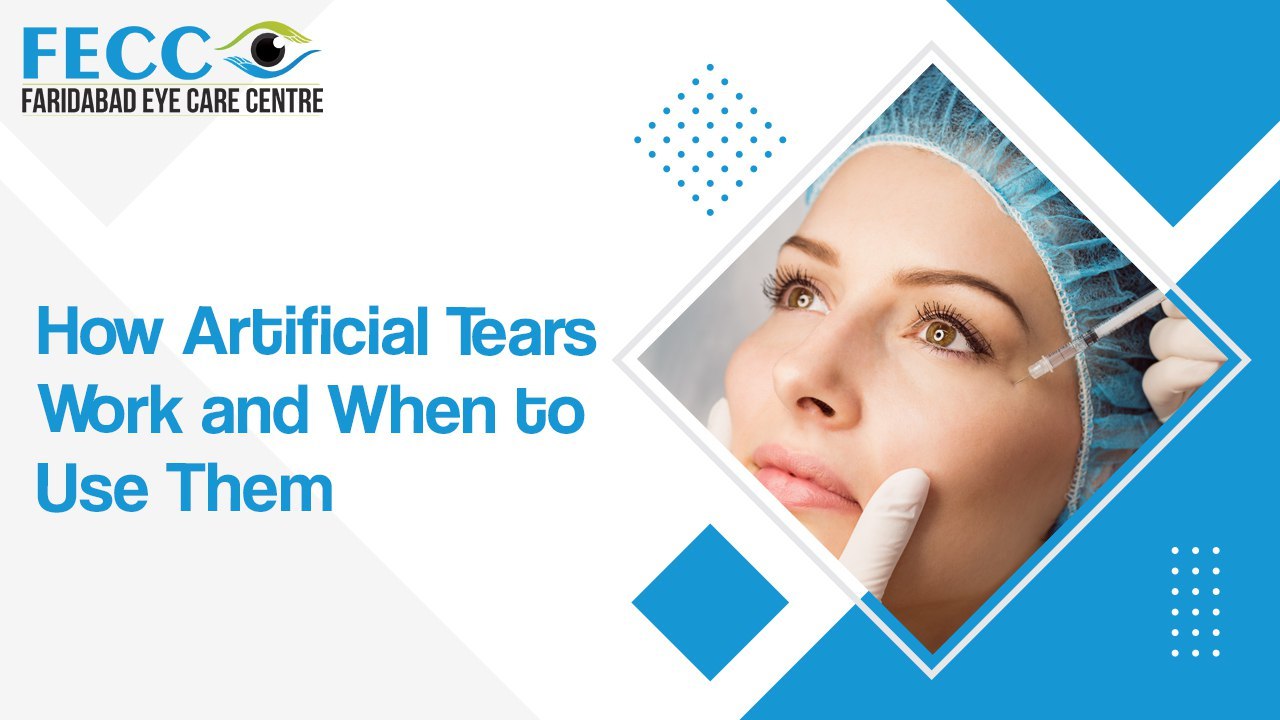
How Artificial Tears Work and When to Use Them
Our eyes are among the most delicate organs in the human body, constantly exposed to the environment. From dust, pollution, and allergens to long hours of screen use, many factors can lead to discomfort, dryness, and irritation. This is where artificial tears play a crucial role in maintaining eye health and comfort. For persistent issues, consulting the Best Ophthalmologist in Faridabad ensures that your eye health is managed with expert care.
In this article, we’ll explore how artificial tears work, their benefits, and the right time to use them.
What Are Artificial Tears?
Artificial tears are lubricating eye drops that help relieve dryness and irritation by mimicking the natural tears produced by our eyes. Natural tears are essential for:
- Keeping the eye surface moist
- Providing oxygen and nutrients to the cornea
- Washing away dust, debris, and microorganisms
- Ensuring a clear vision by maintaining a smooth optical surface
When the eyes fail to produce enough tears or when the tears evaporate too quickly, artificial tears supplement the deficiency and restore comfort. A routine eye check-up in Faridabad can help identify whether artificial tears are sufficient or if further treatment is needed.
How Do Artificial Tears Work?
Artificial tears are formulated with ingredients that replicate the three main layers of natural tears:
- The Mucin Layer – Ensures tears spread evenly across the eye’s surface. Artificial tears often contain polymers like carboxymethylcellulose or hydroxypropyl methylcellulose to achieve this effect.
- The Aqueous Layer – Provides hydration. Most artificial tears contain water, electrolytes, and glycerin to restore moisture and prevent dryness.
- The Lipid Layer – Prevents rapid evaporation of tears. Advanced artificial tears may include lipids such as mineral oils or castor oil to stabilise this protective layer.
By replenishing these layers, artificial tears reduce irritation, improve comfort, and support healthier vision.
When Should You Use Artificial Tears?
Artificial tears are recommended in a wide range of conditions. Some common situations include:
1. Dry Eye Syndrome
One of the most frequent reasons people use artificial tears is dry eye disease, caused by insufficient tear production or poor tear quality. Symptoms include burning, redness, gritty sensation, or even excessive tearing. Artificial tears provide relief by lubricating and protecting the ocular surface. If symptoms persist, the Best Ophthalmologist in Faridabad can guide you with advanced treatments.
2. Prolonged Screen Time
In today’s digital age, many people spend hours staring at screens. This reduces blink rates and accelerates tear evaporation, leading to digital eye strain. Using artificial tears during or after long screen sessions can help restore comfort.
3. Environmental Factors
Dry air from air conditioners, heating systems, or pollution can irritate eyes. Artificial tears act as a shield, reducing the impact of harsh environments.
4. After Eye Surgery
Patients who undergo LASIK, cataract surgery, or other eye procedures often experience temporary dryness. Doctors usually recommend preservative-free artificial tears during the recovery phase.
5. Contact Lens Wearers
Wearing contact lenses can sometimes lead to dryness and discomfort. Specially formulated rewetting drops (a type of artificial tears safe for contacts) help maintain moisture and comfort throughout the day.
6. Allergies
Eye allergies can cause itchiness, redness, and watery eyes. Artificial tears flush out allergens from the eye surface, reducing discomfort.
Types of Artificial Tears
Artificial tears come in different formulations. The right type depends on the severity and cause of dryness:
- Preserved Artificial Tears – Contain mild preservatives to prevent bacterial contamination. Suitable for occasional use but may irritate sensitive eyes if used frequently.
- Preservative-Free Artificial Tears – Recommended for chronic dry eye patients or frequent users. Available in single-use vials to ensure sterility.
- Lipid-Containing Artificial Tears – Best for patients with evaporative dry eye due to meibomian gland dysfunction.
- Specialised Formulations – Some drops include electrolytes, vitamins, or anti-inflammatory agents for targeted therapy.
How Often Can You Use Artificial Tears?
The frequency of use depends on your eye condition. Occasional users can apply them 2–4 times a day. However, people with chronic dry eyes may require more frequent use. If you need drops more than 6 times daily, it’s best to choose preservative-free options to avoid irritation.
It is always advisable to follow your ophthalmologist’s guidance, especially if dryness persists despite frequent use. A regular eye check up in Faridabad can help detect underlying conditions early.
Precautions While Using Artificial Tears
- Always wash your hands before applying eye drops.
- Avoid touching the dropper tip to your eye or eyelashes.
- If you wear contact lenses, use only those drops specifically designed for contacts.
- Store them as recommended, and check the expiration date.
- If you experience persistent redness, pain, or blurred vision, consult an eye doctor immediately.
Conclusion
Artificial tears are a simple yet highly effective solution for combating dryness, irritation, and discomfort in the eyes. They work by replicating natural tears, providing hydration, and stabilising the tear film. Whether you’re dealing with dry eye syndrome, prolonged screen use, environmental triggers, or post-surgery recovery, artificial tears can make a significant difference in maintaining healthy vision.
However, while they provide relief, they are not a permanent cure for underlying conditions. If you find yourself relying heavily on eye drops, it’s essential to consult the Best Ophthalmologist in Faridabad for proper diagnosis and treatment. Regular eye checkups in Faridabad is the best way to protect your vision and ensure long-term eye health.
Taking good care of your eyes today ensures clear and comfortable vision for tomorrow.

